January 23, 2019 - We came to Skaljari. Our tour around the villages of Boka Bay has arrived at one of the most characteristic points when it comes to the typical culture of living through time. Skaljari was not a naval settlement, not even a fishermen village. It was, and on some points still tries to be, just an ordinary village, characteristic for agriculture and families living together and supporting each other in good and bad times. Also, its inhabitants were well-known craftsmanship.
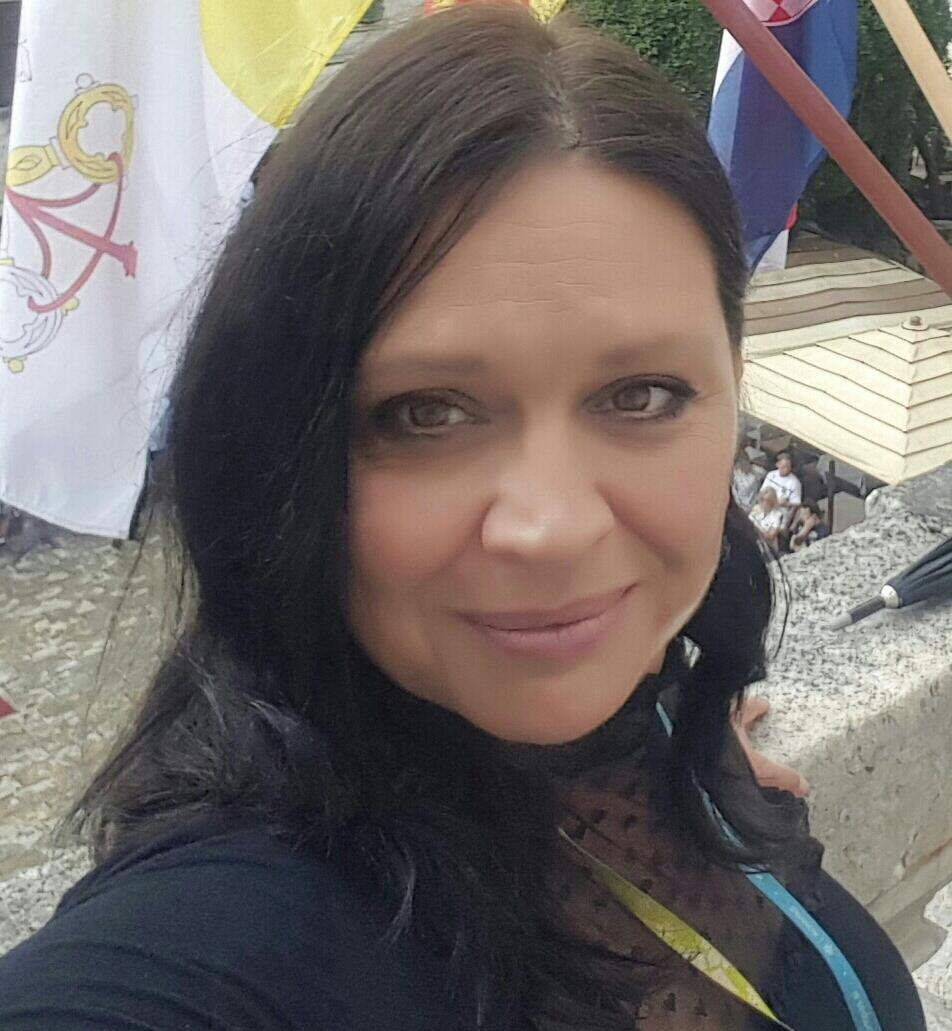 Today, unfortunately, Skaljari is best known for the criminal group "Skaljarski klan", but this is not one of the topics we will be dealing with in this story. We found ourselves a better company. Our host in Skaljari is Dolores Fabian, president of the NGO Ke Nova, who advocates preserving the local tradition of Kotor and Boka Bay through organising numerous events and programs focusing on the material and immaterial cultural heritage of this region.
Today, unfortunately, Skaljari is best known for the criminal group "Skaljarski klan", but this is not one of the topics we will be dealing with in this story. We found ourselves a better company. Our host in Skaljari is Dolores Fabian, president of the NGO Ke Nova, who advocates preserving the local tradition of Kotor and Boka Bay through organising numerous events and programs focusing on the material and immaterial cultural heritage of this region.The village of Skaljari is right next to the Old Town of Kotor. When you come out of Kotor through the South Gate, you pass by the Gurdic and enter Skaljari. Gurdic separates the village from Kotor and the General Hospital of the Muo fishing village. The southern border of the settlement makes the mountain cross of Trojica. On the north side stretches the seashore. Skaljari covers the slope between Vrmac and Mount Lovćen.
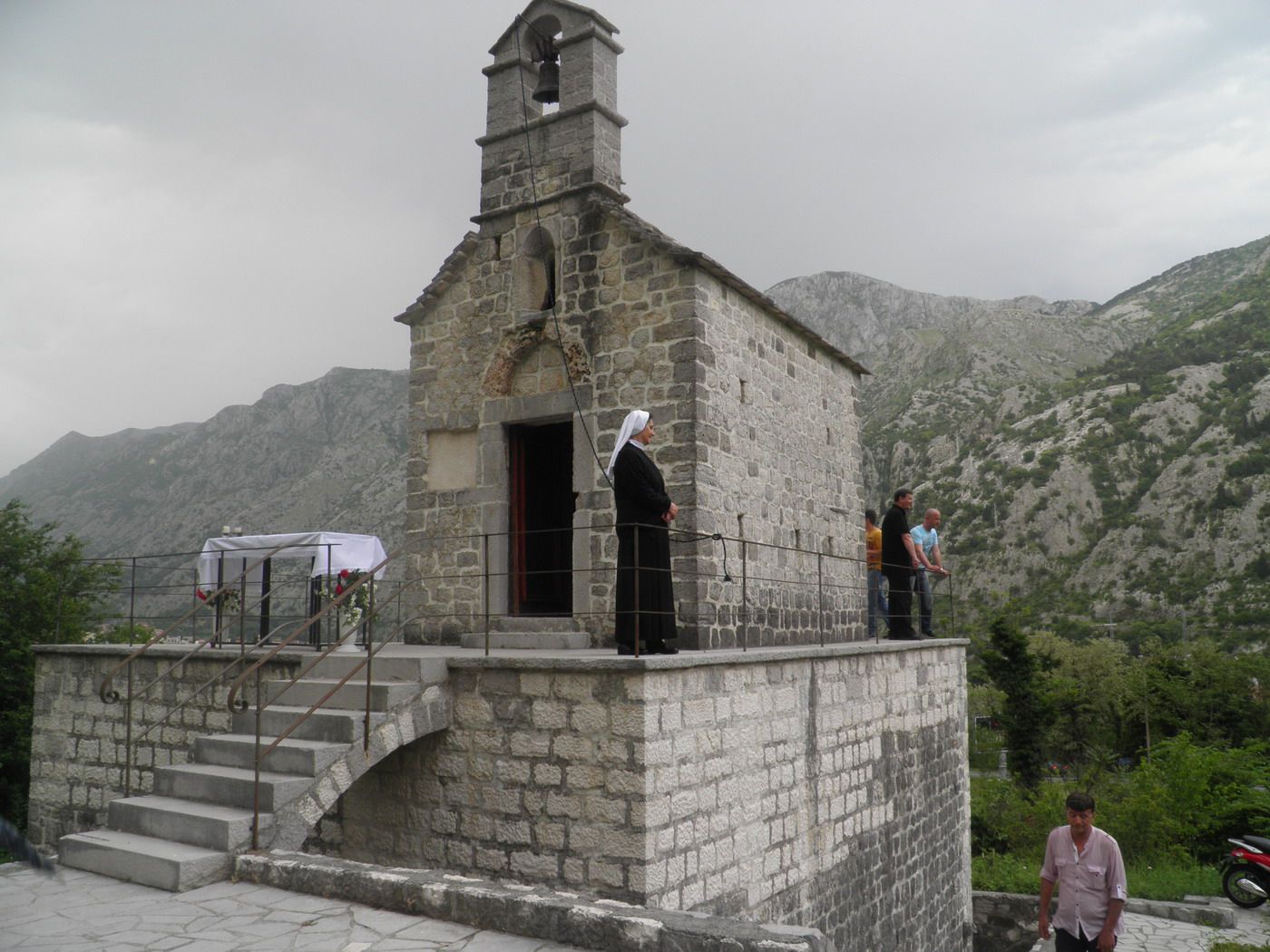 Copyright: Dux Radio
Copyright: Dux Radio Judging by the churches in Skaljari, the oldest church of St. Dujam dates from the end of the 12th century, this settlement started to develop even earlier. The name Skaljari comes from Skalja, a local expression for the stone that characterised the Skaljari landscape before the village became the suburban settlement. The church of St Dujam has recently been restored and re-dedicated to the saint, patron of the town of Split, and its additional cultural value, according to Dolores Fabian, lies in the fact that it is the sanctuary dedicated to St. Dujam on the most southerly point at all.
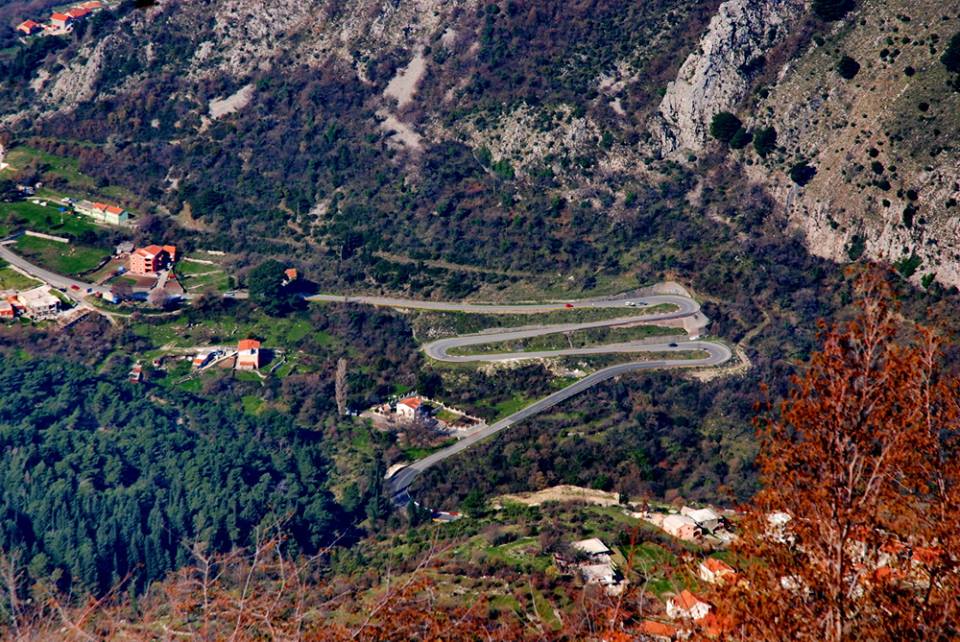 Copyright: Boka News
Copyright: Boka News The so-called "Imperial Way", built on the project of Josip Slade from Trogir from 1879 to 1884, passes through the settlement. According to the local legend, the engineer Slade was so enchanted by the beauty of the Montenegrin princess Milena Petrović that he had designed a part of that road in a shape of the beginning letter of her name - large M. Terrain configuration suggests that this path didn't need sharp curves, which makes this legend closer to the truth.
The locals divided the village into smaller parts and gave them names based on some of their characteristics. So part of the settlement near the General Hospital Kotor is called Banat because there were most plains there. The upper part of Skaljari near Vrmac Hill called simply “Pod Vrmac“ (Inder Vrmac). The centre of the village is called Petrovici, according to the largest family from Skaljari. Most of these toponyms were lost in time, mostly due to urbanisation, transforming the former agricultural area into the suburbs of Kotor. In the period after the Second World War, this agricultural area received several factories, a bus station and many other contents that have forever changed its physiognomy. The beginning of the 21st century and Skaljari brought about excessive and inadequate urbanisation, which forever destroyed the harmony of the cultural landscape of the place.
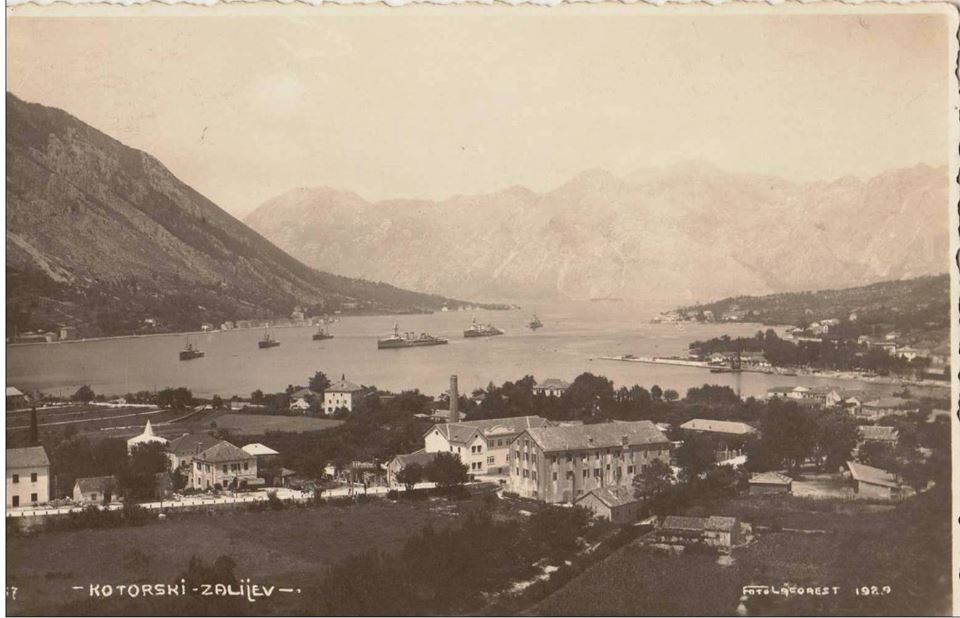 Skaljari and Kotor in 1929
Skaljari and Kotor in 1929 "Times are changing, the way of life changes. New people are coming, the structure of the population changes, which all affect that old, traditional lifestyle loses. However, we are struggling through the manifestations and events that characterise our town to have Skaljari survive as it once was, recognisable above all by the women who worked in the gardens and then sold their vegetables on the Kotor's market and on," says our host, Dolores Fabian.
Boka Bay is a predominantly karst region with exceptional characteristics of the Mediterranean climate, with excellent conditions for growing pomegranates, citrus fruits, figs and olives in small gardens, so-called "Bastine". In their "Bastine" the villagers of Skaljari brewed salad, cabbage, selenium, onions and potatoes, all of which they called together "Verdura", which is an Italian name for vegetables. From corn, they raised maize, rye and oats, and there was a mill in the village. The mill dated from the end of the 18th century and was in use until the beginning of the 20th century. A vineyard and olive were growing in the village, so Skaljari also had olive mills. They were less concerned with cattle breeding, and mainly breeding goats.
Along with agricultural activities, the locals were also good craftsmen. Skaljari (what is also the name for the village inhabitants) were famous sailors, shoemakers, carpenters. Especially known and recognised were bricklayers from this village. It is not surprising since they had to learn from their little feet to match and cut the small stones everywhere around them. Of course, the village was all of rock. From the dry-stone terraces, through the mills and the roads, sometimes modest and later more significant and beautiful houses – everything was built of stone from the site itself.
Skaljari is one of the Boka Bay settlements, which has preserved the best the local Bokelian dialect, which is characterised by a high number of Roman words. If we talk about Tivat, that's the case in the village of Donja Lastva. Perhaps these two villages are "Cakulavi", which would mean settlements whose residents love to talk, often gossips on their neighbours. Dolores Fabian, our host in Skaljari, has another explanation.
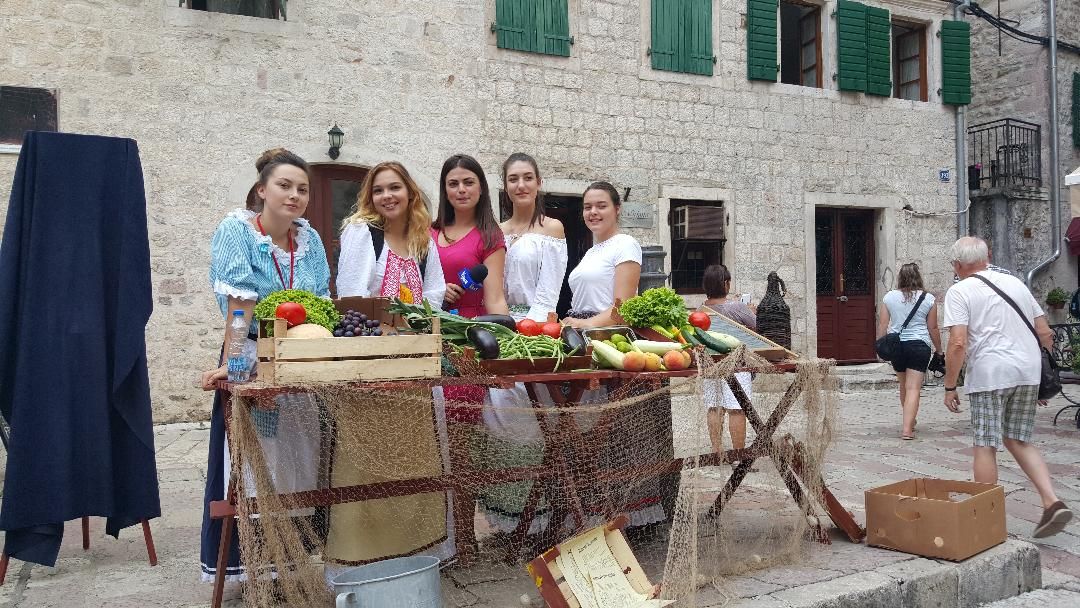 Skaljarice with one Konavoka at the Skaljarska Pjaca, Old Town of Kotor
Skaljarice with one Konavoka at the Skaljarska Pjaca, Old Town of Kotor "You know that one of the squares in Kotor carries the name “Skaljarska Pjaca“ (Skaljari's market). There once the villagers from Skaljari sold their agricultural products. As for every market, there was a characteristic "Susur" - a glance and overwhelming, averting, a lot of "cuddling". " Dolores with members of the organisation, through the various manifestations tries to save the sounds, smells and tastes of old times. In this sense, the most interesting is the tourist event "Kotor's Time Machine" which is held during the summer months by the squares of the Old Town of Kotor. One of the segments of this program is exactly at the square named by Skaljari where young girls perform the sketches prepared by Dolores, taking care that every detail of the young "Skaljarice", their folk costumes, the vegetables they "sell" on their booths, corresponds to what once was.
"We organise that program on Saturday morning during the summer months. Then Kotor takes tourists from all over the world. When they come across some of our programs, they are very interested; the most interesting is when a cruise ship full of tourists comes from Italy. They all understand that they enter the zone of some play- the villagers are trying to sell their goods, from the window some old lady cry to them that she cannot rest from their noise. When they hear the words of their language, strangely coloured by the influences of the Slavic language, Italians do not miss to look to the end. They do not have to understand everything, the other guests from abroad do not understand anything, but they feel that it is a life that is entirely in harmony with the theatrical scene, and each Kotor's square is a stage for itself," says Dolores.
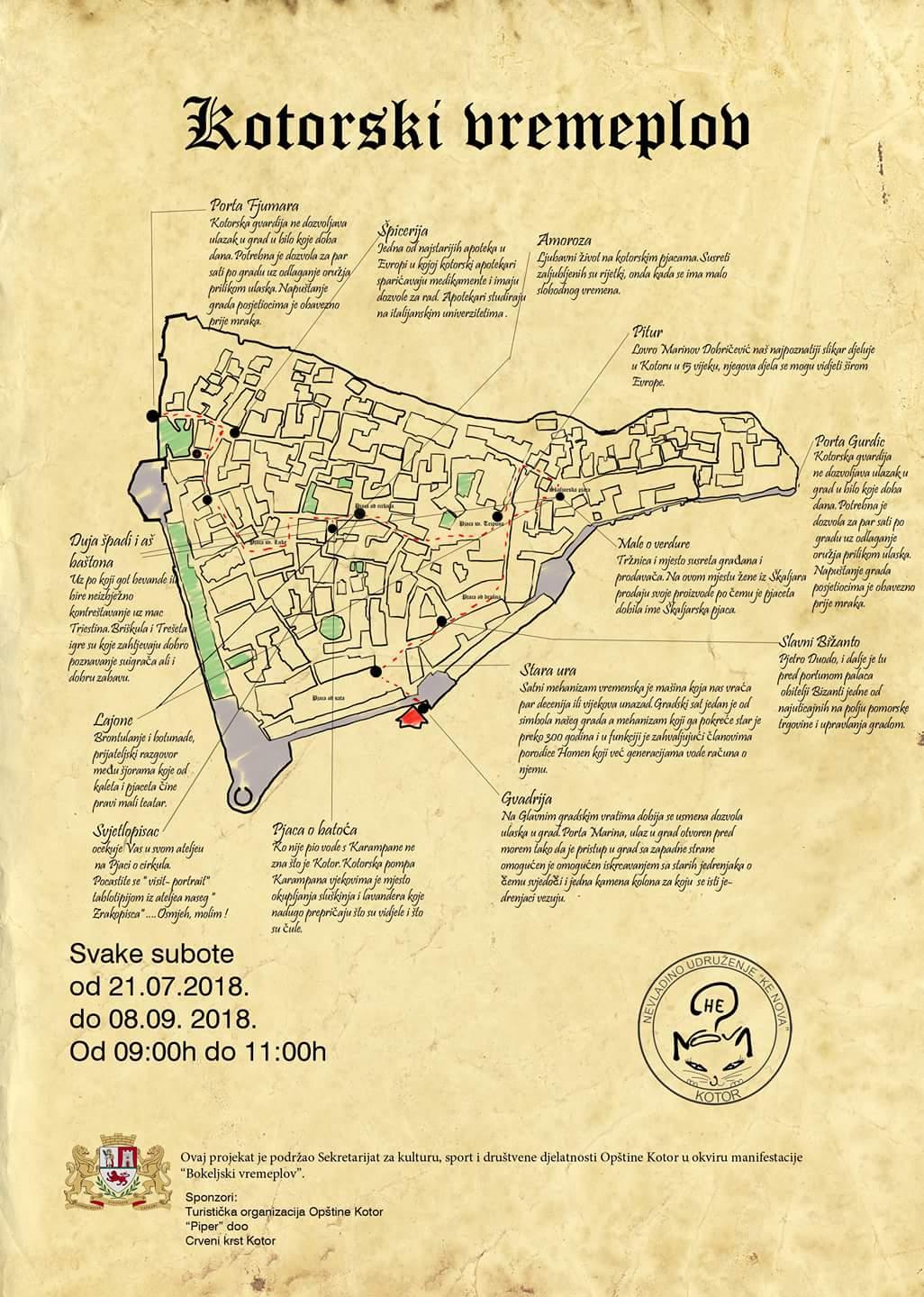 "The one who knows Skaljari from the story, if not out of life, when he is walking in a village, will not find what we have in our stories. It will be difficult even to notice the most important structures in the village, some house of an important family or a church of St. Luka, celebrated by inhabitants of Skaljari as their forefather. Formerly small dry stone walls that have kept the gardens are now being the supporting walls of some new buildings. So, the look of Skaljari is completely different. We strive to bring the old life of Skaljari and Skaljarice through the scene closer to all those who came to live with us. We want to inspire them to act at least for a moment as true Skaljari," explains Dolores, adding that the activities of NGO Ke Nova are held during the main tourist season as well as in the winter months:
"The one who knows Skaljari from the story, if not out of life, when he is walking in a village, will not find what we have in our stories. It will be difficult even to notice the most important structures in the village, some house of an important family or a church of St. Luka, celebrated by inhabitants of Skaljari as their forefather. Formerly small dry stone walls that have kept the gardens are now being the supporting walls of some new buildings. So, the look of Skaljari is completely different. We strive to bring the old life of Skaljari and Skaljarice through the scene closer to all those who came to live with us. We want to inspire them to act at least for a moment as true Skaljari," explains Dolores, adding that the activities of NGO Ke Nova are held during the main tourist season as well as in the winter months:"In the Kamelija Shopping Center, we often have demonstrations linked to the local tradition, at least once a month to Boka Bay. We thematise the people of this region, the tradition, and of course, we offer the inevitable “Papalada Ala Maka“, a tasting of local gastro-culture dishes. We invite women from Kavac, Prcanj, Perast, Risan, Dobrota. And of course, Skaljarice. They always respond, and their table is always overburdened. It's always the delicacies that have for centuries been part of our local cuisine."








